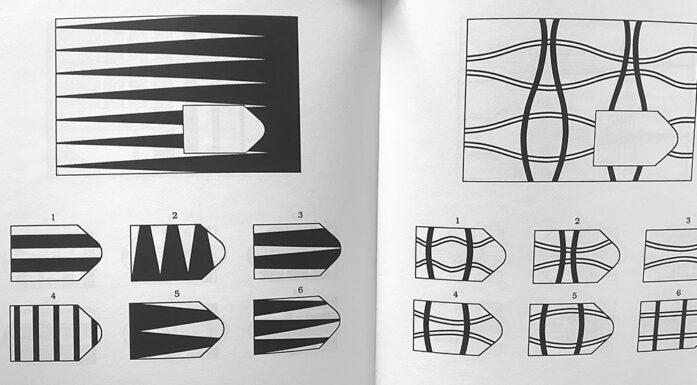Grades shouldn’t be introduced too early
Assigning marks in Grade 7 can have negative effects. A new study shows that the practice can affect pupils’ academic performance and how they experience the transition to secondary school.
Norway’s current law says that grades cannot be used in assessing elementary school pupils.
This practice is enshrined in the Education Act, the law that applies to primary and secondary education. The Act states that numerical grades may first be introduced at the lower secondary level that starts with Grade 8.
However, some teachers grade pupils’ schoolwork in Grade 7, in the belief that this will make their transition to secondary school easier. A Norwegian study, in which pupils were interviewed, revealed that some teachers offered them numerical grades in Grade 7.
What effect does grading actually have?
“Studies show that numerical grading in Grade 7 can have an overall negative effect on pupils’ transition experience and, in particular, on their future academic performance. That’s why the Education Act statement that assessment at the elementary level must be done without the use of grades is both correct and important,” says Gro Marte Strand, an associate professor at NTNU’s Department of Teacher Education.

Gro Marte Strand’s study relies on both a literature study and findings from three qualitative sub-studies, where she followed a cohort of 165 pupils through the transition from two primary schools to the same secondary school. Photo: Private
Strand is responsible for a survey in which pupils, parents, teachers and school leaders related their experiences and perspectives on the transition from primary to secondary school. The survey is based on qualitative studies and literature reviews.
Strand has found that introducing grades probably creates greater challenges for pupils in Norwegian schools than in other countries that can be compared.
Dreading lower secondary
Strand discovered that a number of pupils were dreading starting secondary school, and many were especially nervous about getting numerical grades.
The pupils who did not get as good marks as they had hoped for when they were offered to try that form of assessment in Grade 7 were the most worried.
Many pupils had the impression that secondary school was going to be “super difficult” and that they had to know everything right from the first day of school. This might be because the students came from elementary schools where the teachers were perpetuating negative myths about secondary school.
One of the teachers at the secondary level commented that she believed this to be the case:
That’s what makes a lot of kids dread secondary school. In Grade 7, pupils were given a ton of homework, and then the teachers would tell them “OK, now you have to follow along and sharpen your skills, because in secondary school, I’m telling you, you’ll be graded.
And when our pupils started secondary school, they talked about grades from day one. And then I asked them, “Where did you get all these ideas from – what’s made you so focused on grades?”
Teachers should be upbeat about secondary level
Strand points out that teachers in Grade 7 should be talking positively about secondary school and preparing pupils for what actually awaits them.
Instead of scaring the pupils, elementary school teachers should be reassuring pupils about their transition to secondary school. Teachers need to build pupils’ confidence in their ability to be successful there.
A positive approach would help pupils experience greater continuity between the educational levels. It would support the pupils’ desire to learn, a characteristic that teachers should foster as students transition to secondary school. International studies indicate that pupils’ sense of mastery and motivation has a tendency to drop right after they start secondary school.
Strand sees a link between student motivation and how the focus of the secondary school affects new pupils’ efforts and achievements.
Before pupils in Grade 8 face numerical grades, they need time to get to know their classmates and the school’s routines and expectations. This process can contribute positively to pupils’ mastery, motivation and goal achievement in the long term.
Creating continuity for pupils requires that secondary level teachers become well acquainted with the elementary schools that their pupils come from. But today, schools and municipalities have no statutory obligation for primary and secondary schools to cooperate.
- You might also like: Important for kids to practice swimming outdoors
Need to introduce an obligation to cooperate
Public planning documents from the Norwegian Ministry of Education and the Directorate for Education address the transition between Kindergarten and Grade 1. Kindergartens and elementary schools have a statutory obligation to work together to ensure that the transition is as smooth as possible.
The consultation draft for the new Education Act is expected to include a corresponding obligation for cooperation between lower secondary and upper secondary schools starting in 2024. However, a similar obligation between elementary and lower secondary schools will probably not be introduced.
“Studies show that the transition to lower secondary school can be just as challenging as other transitions in pupils’ school career. Some people might say that elementary and secondary schools are likely to work together anyway, because they’re usually in the same school district, but it’s not that simple,” says Strand.
Strand believes that introducing an obligation to cooperate is needed, since it can contribute to raising the quality of the transition process in the various municipalities.
“The most important thing that teachers can do is to collaborate closely and systematically so that they’re well acquainted with each other’s schools and practices,” says Strand.
Stress about grades
Many lower secondary school students said that they wore themselves out trying to achieve the highest marks of 5 and 6.
They knew that, actually, doing their best was enough and that they should focus on learning at their own pace, but they felt pressure, especially from their fellow classmates.
A pupil told Strand at the end of Grade 10:
“I’ve noticed that the effort I’ve put into my school work has influenced my teenage years a lot, mostly in a negative way. I’ve become really tired, and it’s affected me a lot mentally.”
Strand points out that this kind of unfortunate achievement-oriented learning and student culture can occur when students become preoccupied with grades in elementary school and have already established expectations.
“We know that if adults pay a lot of attention to the numerical grade itself, rather than to the pupil’s learning and development, it can contribute to pupils becoming more concerned with their performance and comparing themselves to others rather than learning,” says Strand.
Strand believes that teachers in Grades 7 and 8 need to be aware of this finding and teach pupils that the most important thing is their effort and individual progress, not grade results.
- You might also like: Children need rough and tumble play
Achievement-oriented student culture
Teachers have to work effectively with assessment and promote a learning-oriented student culture starting in Grade 1. The effectiveness of the work that is done in the early school years will influence the culture that pupils bring with them to secondary school.
“Coming from an elementary school where the culture has been achievement-oriented makes cultivating a positive learning-oriented attitude in secondary school more challenging,” says Strand.
Teachers need to ensure that an achievement-oriented student culture does not develop when the students start in Grade 8. This is particularly important since pupils face three national tests during the first weeks after the summer holidays.
Having fewer assessments in the first half of Grade 8 could help pupils avoid an experience like the one this student describes:
“They said at the beginning that there wouldn’t be that many tests in the first half of the year. And then I think, my God, how many tests are there going to be when we’ve had so many tests already?”
Having fewer assessments might also help make the shift to grading a smoother experience for pupils.
“Pupils often encounter so much that is new and unfamiliar when they start secondary school that many of them simply don’t have the capacity to perform academically during this period,” says Strand.
Let pupils find joy in grades
The Education Act only requires grades to be given for mid-year and final assessments. Teachers do not need to give marks on all the work pupils do in Grade 8.
The mid-year evaluations that are given in the Grade 8 are mid-term assessments. Only the end-of-year overall achievement and exam grades count as a final assessment and form the basis for applying to upper secondary school.
Starting secondary school is a big transition, and it is important that classmates have time to get to know each other and feel safe before they have to start performing academically. Pupils usually need one term to settle into the secondary school routine.
Strand emphasizes that numerical grades must be introduced in the correct way, after pupils have been in Grade 8 for a period. This is a task for the teachers at the secondary level that can help students experience the grading process as motivating.
About the study
Strand’s study is based on literature reviews and findings from three qualitative sub-studies where she followed a cohort of 165 pupils through the transition from two primary schools to the same secondary school. The secondary school has 450–500 pupils and belongs to the same district in a larger Norwegian city.
Strand followed the students for almost four years, from the end of Grade 7 until the completion of Grade 10. She thereby managed to capture how the pupils experienced starting secondary school over time.
She conducted 90 interviews with pupils, parents, teachers and school leaders, and was present at parent meetings, the schools’ transfer and planning meetings, the first week of school in Grade 8 and school days that were used for data collection.
The students also shared their transition experiences in letters they wrote on three occasions.
The literature reviews are based on other research-based literature (books, articles, chapters and reports), mainly from western English-speaking countries since few studies exist from the Norwegian context.
Strand’s book, Overgangen til ungdomstrinnet (The transition to lower secondary school), provides useful information for anyone who is concerned with pupils’ transition processes.
Reference: Strand, G. M. (2022). Overgangen til ungdomstrinnet. Universitetsforlaget.





